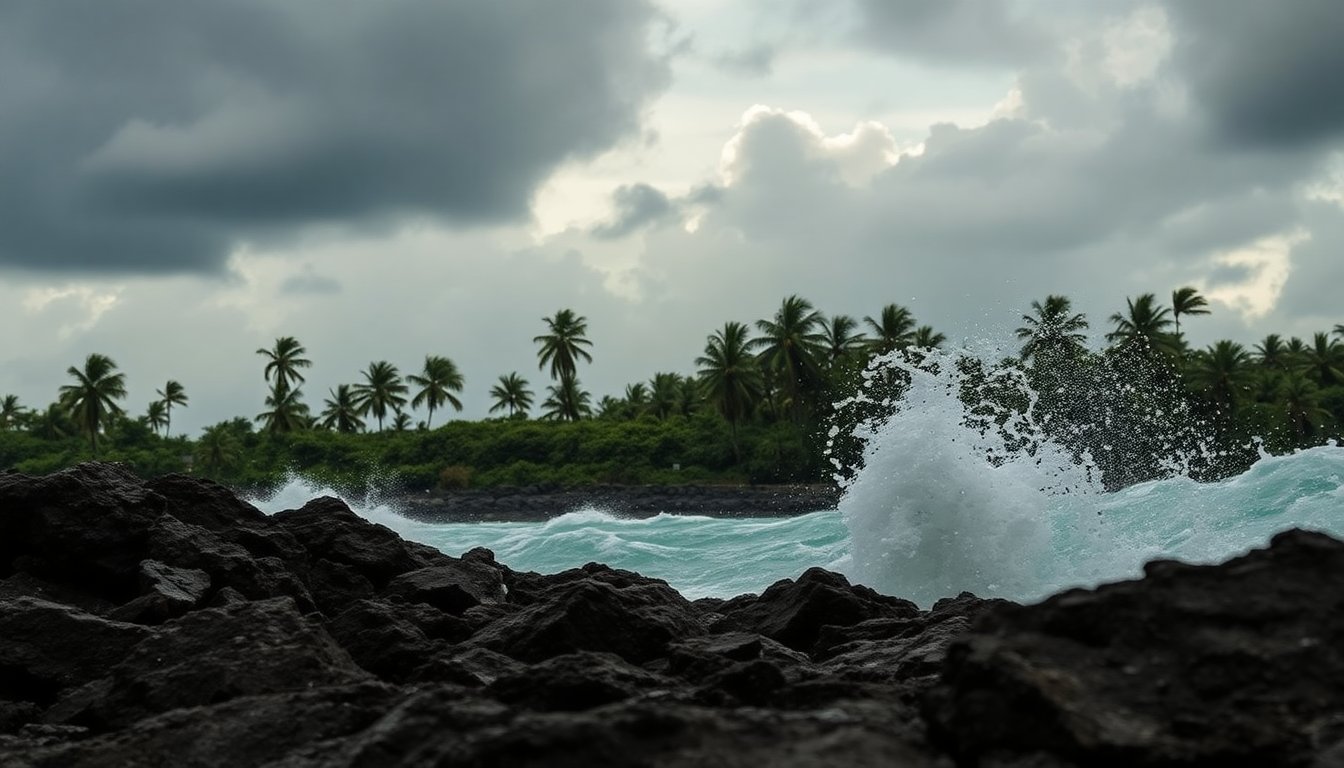Table of Contents
As the northern Caribbean braces for impact, Hurricane Melissa has escalated into a formidable Category 4 storm. The latest updates from the U.S. National Hurricane Center (NHC) indicate that this hurricane could strengthen further, potentially reaching Category 5 status by the time it makes landfall in Jamaica.
According to the NHC, Melissa is currently situated approximately 180 kilometers south-southeast of Kingston, Jamaica, with maximum sustained winds of around 220 km/h. Residents are urged to prepare for severe weather conditions, as the storm is expected to hit the southern coast of Jamaica late Monday or early Tuesday.
Impending chaos for Jamaica and Haiti
Officials are warning that the impact of Melissa will likely result in catastrophic flooding, especially in Jamaica and southern Hispaniola, which includes Haiti and the Dominican Republic. Predictions suggest that rainfall amounts could reach an astonishing 100 centimeters in some areas, leading to flash floods and landslides.
Preparation and emergency response
In anticipation of the hurricane’s impact, the Jamaican government has activated a Level 3 emergency protocol. This includes the closure of major airports such as Sangster International Airport and Norman Manley International Airport. Over 650 emergency shelters have been established across the island, and local authorities have ensured that food supplies are readily available for distribution.
“With the storm moving slowly, it poses a challenge for recovery efforts,” stated Evan Thompson, principal director at the Meteorological Service of Jamaica. “Communities will experience prolonged exposure to heavy rainfall, making it difficult to mitigate the damage.”
Impact on neighboring regions
The storm is not only a threat to Jamaica; it has already caused fatalities in nearby Haiti, where three lives were lost due to flooding. Additionally, reports indicate that the Dominican Republic has experienced damage to nearly 200 homes, with infrastructure severely affected by rising floodwaters.
Future trajectory of Hurricane Melissa
After impacting Jamaica, Melissa is forecasted to move towards Cuba, bringing along significant rainfall of up to 30 centimeters. The NHC has warned that this storm will continue to pose threats as it progresses into the Bahamas by Wednesday. The potential for a storm surge of 9 to 13 feet is also anticipated along Jamaica’s southern coastline, further complicating an already dire situation.
Satellite imagery confirms that Melissa’s wind speeds have surged rapidly, which has raised alarms due to the hurricane’s potential to wreak havoc upon landfall. While the storm’s path is currently being monitored, residents in affected areas are advised to stay updated on the latest forecasts and heed any evacuation orders.
Historical context and climate considerations
Interestingly, if Hurricane Melissa maintains its current intensity, it could become one of the most powerful hurricanes to strike Jamaica since records began. The strongest storm previously recorded was Hurricane Gilbert in 1988, which was also a Category 4 hurricane.
This season has seen a higher-than-average number of named storms, and experts from the National Oceanic and Atmospheric Administration (NOAA) had predicted a busy hurricane season with 13 to 18 named storms. Melissa is the thirteenth named storm of the season, emphasizing the need for vigilance as the Atlantic hurricane season stretches until November.
According to the NHC, Melissa is currently situated approximately 180 kilometers south-southeast of Kingston, Jamaica, with maximum sustained winds of around 220 km/h. Residents are urged to prepare for severe weather conditions, as the storm is expected to hit the southern coast of Jamaica late Monday or early Tuesday.0





